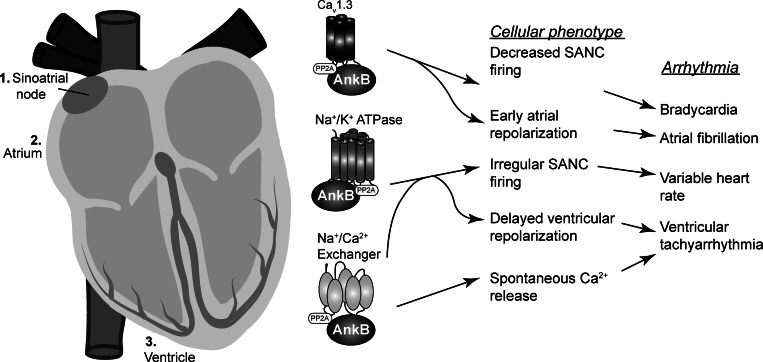Fig. 7.
Broad spectrum of arrhythmia phenotypes and proposed underlying cellular/molecular mechanisms in ankyrin-B syndrome. Loss of ankyrin-B affects a myriad of ion channels and transporters. Loss of Cav1.3 promotes early atrial repolarization and slowing of SAN cell spontaneous firing which contributes to a substrate for sinus node dysfunction and atrial fibrillation. Loss of NKA promotes irregular, chaotic SAN firing and delayed ventricular repolarization leading to a substrate for sinus node dysfunction and ventricular tachyarrhythmias. Finally, loss of NCX promotes overload of Ca2+ in the sarcoplasmic reticulum, which is an important determinant of the proarrhythmogenic substrate in the ventricle. PP2A, protein phosphatase 2A.

